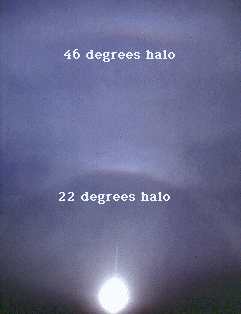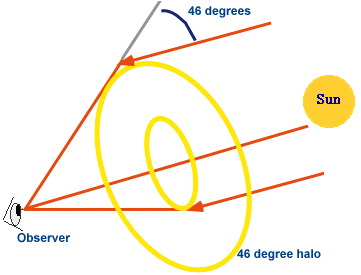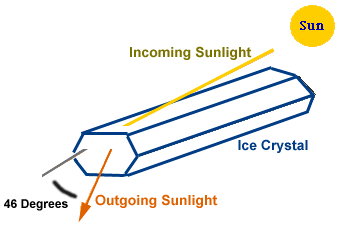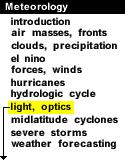
|
A 46 degree halo is a ring of light observed 46 degrees from the sun or moon. Although they are less common than 22 degree halos, the process by which they form is similar.

Photograph by: Rauber |
What determines if a 46 degree halo or a 22 degree halo develops is the path of the light as it passes through hexagonal ice crystals. A 22 degree halo results from "in one side, out another side"; a 46 degree halo from "in one side, out the bottom". |
The incoming light passes through ice crystals of thin, high-level clouds (like cirrostratus clouds) and is refracted by an angle of 46 degrees before being registered by the eye. Consequently, an observer sees a ring of light around the sun (or moon) at an angle of 46 degrees relative to the light source.

These ice crystals are hexagonal-shaped columns with diameters between 15 and 25 micrometers and have an appearance resembling tiny pencils.

A 46 degree halo develops when light enters one side of a columnar ice crystal and exits from either the top or bottom face of the crystal. The light is refracted twice as it passes through the ice crystal and the two refractions bend the light by 46 degrees from its original direction. This bending produces a ring of light observed at 46 degrees from the sun or moon.

22 degree halo |
|

ice crystals |





